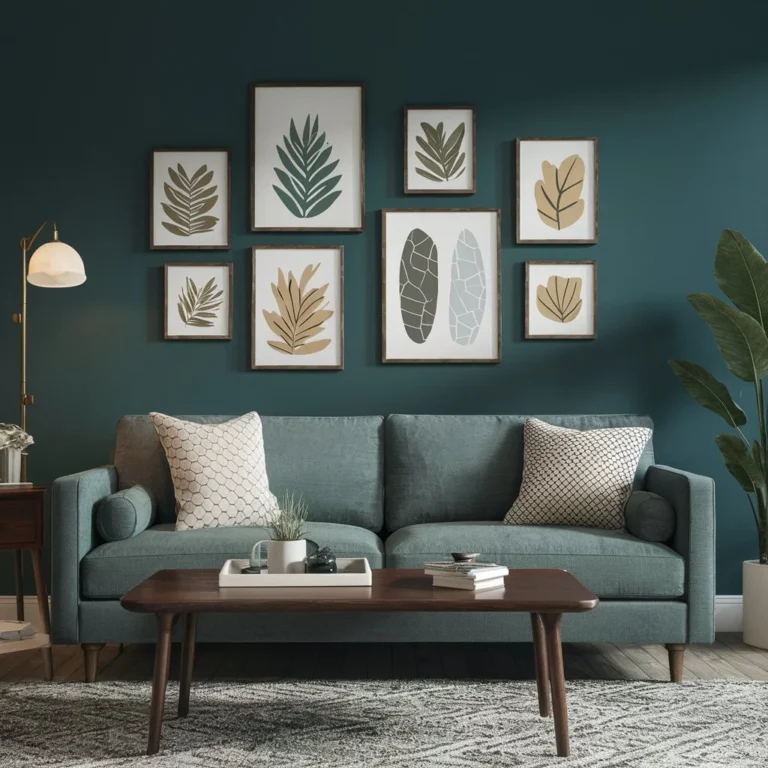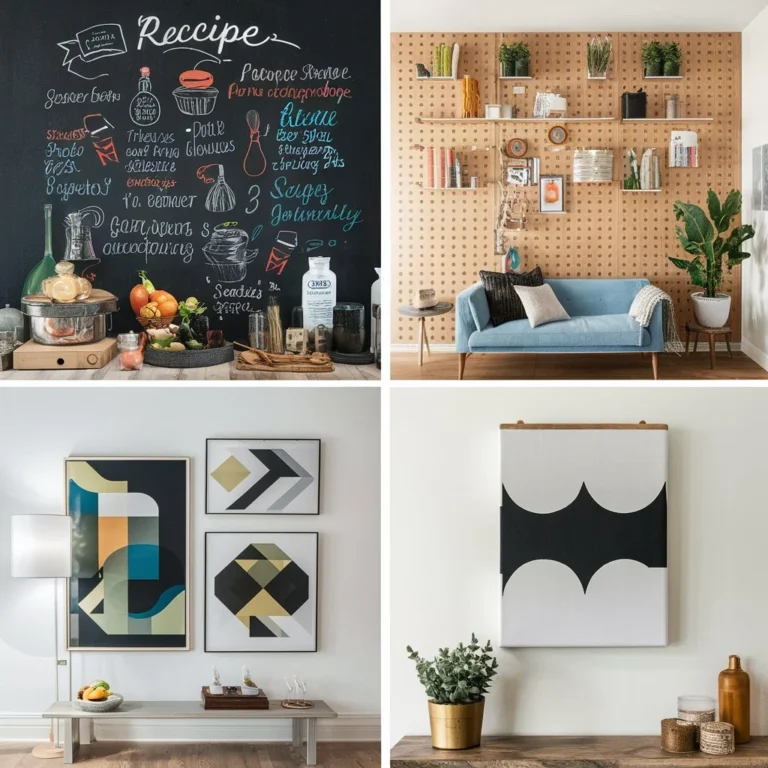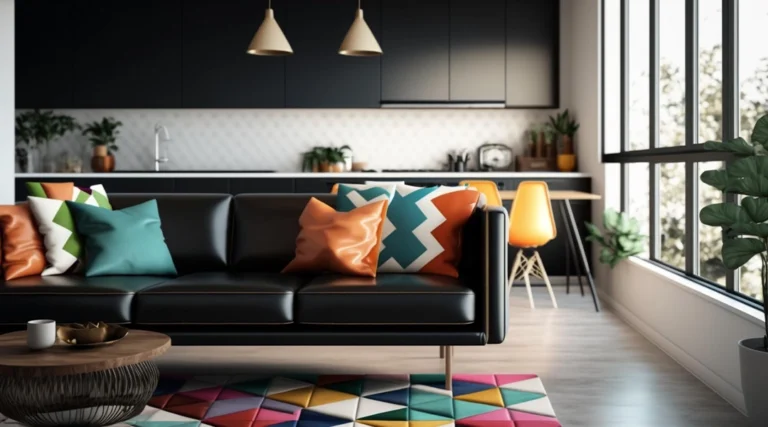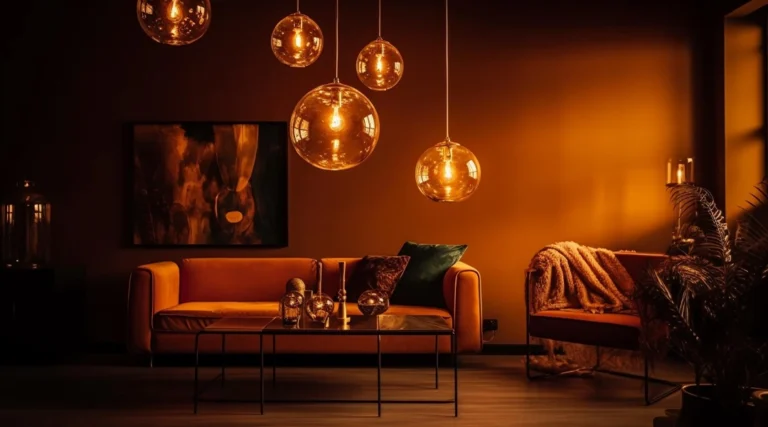How to Decorate Two Living Rooms: Expert Tips for Effortless Style
Embarking on the journey of decorating not just one, but two living rooms? Get ready for a delightful rollercoaster of creativity and decision-making! Whether you’re blessed with two distinct living areas or tasked with dividing up an open-plan space, the adventure of styling them is both exhilarating and, let’s admit it, a tad daunting. But fear not! With a sprinkle of imagination and a dash of strategic thinking, you’ll master how to decorate two living rooms.
By utilizing color, furniture placement, and décor, you can create distinct yet harmonious living spaces that reflect your personal style and meet your practical needs. This article will provide you with practical tips and creative ideas to inspire your dual living room design. Let’s explore how to decorate two living rooms to maximize their aesthetic appeal and functionality.
Choosing The Right Color Scheme

Choosing the right color scheme for two living rooms can be a daunting task, but with careful consideration and planning, you can create a harmonious and visually appealing space. The color scheme sets the tone for the entire room, influencing the mood and ambiance. By strategically selecting colors, you can create a cohesive look for both living rooms while still allowing for individuality. Let’s explore the key steps in choosing the right color scheme for two living rooms.
Selecting A Neutral Base
Start by selecting a neutral base color for both living rooms. Neutral colors such as whites, creams, grays, and beiges provide a versatile foundation that can complement a wide range of accent colors. By choosing a neutral base, you create a timeless backdrop that allows for flexibility in decor and prevents the rooms from feeling overwhelming or disjointed.
Adding Pops Of Color
Once you have established a neutral base, the next step is to add pops of color to infuse personality and vibrancy into each living room. Opt for bold and complementary hues that resonate with the overall aesthetic you want to achieve. Consider incorporating accent walls, colorful throw pillows, and decorative accessories to introduce the desired pops of color, ensuring they are consistent with the theme while adding visual interest.
Creating Cohesion With Accents
Accents play a crucial role in tying the color scheme together across two living rooms. Coordinating accent colors through rugs, artwork, and curtains can create visual cohesion and harmony. Additionally, incorporating metallic accents such as gold or silver can add a touch of elegance and balance to the overall color palette, enhancing the cohesiveness of the two spaces.
Furniture Arrangement And Placement
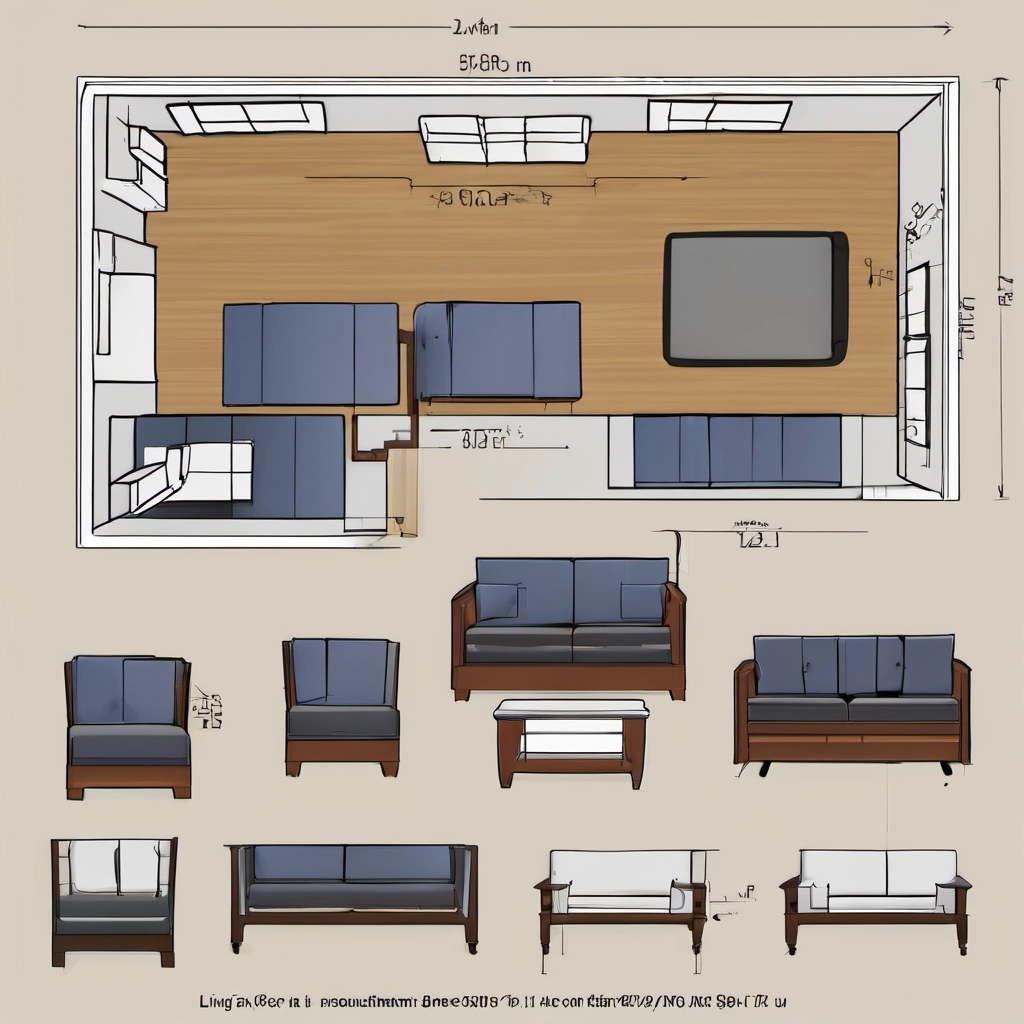
To create an inviting and functional living space, the arrangement and placement of furniture are crucial. Proper furniture arrangement can help to optimize the visual appeal and flow of the room, giving it a balanced and harmonious look. Let’s delve into the essential aspects of furniture arrangement and placement in two living rooms, ensuring that each space is both aesthetically pleasing and practical.
Creating A Focal Point
A focal point in a living room anchors the arrangement and draws attention to a specific area. This could be a fireplace, artwork, or a beautiful scenic window. When arranging furniture, it’s essential to orient seating and other pieces to highlight the focal point. By doing so, the room gains a sense of purpose and direction, contributing to an inviting and visually appealing space. Ensuring that the focal point is the main area of focus in the room enhances its overall appeal.
Considering Scale And Proportion
When arranging furniture, considering scale and proportion is vital. Each piece of furniture should fit the scale of the room. Avoid overcrowding the space with oversized furniture or creating a sparse look with pieces that are too small. Maintaining a balanced and proportionate arrangement helps to create a harmonious and visually pleasing living room. Proper scale and proportion contribute to a comfortable and inviting atmosphere.
Arranging For Conversational Flow
Arranging for conversational flow involves placing furniture in a way that encourages interaction and communication. Ensure that seating is positioned to facilitate easy conversation and connection between individuals in the room. Avoid placing furniture too far apart or too close, as this can hinder the natural flow of conversation. Creating a conversational arrangement encourages social interaction and a comfortable, inviting atmosphere in the living room.
Mixing And Matching Styles
When it comes to decorating two living rooms, one of the most exciting prospects is the opportunity to mix and match different styles. Blending traditional and contemporary elements, combining different textures, or integrating vintage and modern pieces can create an eclectic and visually appealing aesthetic. In this article, we will explore these three approaches to mixing and matching styles in order to inspire you to create two unique and captivating living spaces.
Blending Traditional And Contemporary
Blending traditional and contemporary styles can result in a harmonious and balanced living room design. Take the best of both worlds and use traditional furniture pieces with a contemporary twist. For example, pair a plush and classic sofa with sleek and modern coffee tables. Combine ornate frames with minimalist artwork for an interesting contrast. Mixing traditional patterns, like floral or damask, with geometric prints can add visual interest to the space. The key is to find the right balance between the two styles, ensuring that they complement each other rather than compete.
Combining Different Textures
When it comes to mixing and matching styles, don’t forget about the importance of different textures. Combining textures can create a tactile and visually stimulating living space. Pair a smooth and sleek leather sofa with a plush and cozy fabric armchair. Add a touch of warmth with a chunky knit throw or woven rug. Incorporating natural materials, such as wood or stone, can further enhance the texture in the room. By playing with different textures, you can add depth and dimension to the overall design.
Integrating Vintage And Modern
If you have a love for vintage pieces, integrating them with modern elements can result in a unique and nostalgic living room design. Use vintage furniture as statement pieces and mix them with contemporary accessories. Incorporate vintage artwork or antique collectibles into a modern gallery wall. Combining classic silhouettes with sleek and minimalistic designs creates a juxtaposition that can be visually striking. By carefully curating and blending vintage and modern elements, you can create a living room that tells a story and reflects your personal style.
Utilizing Lighting For Ambiance
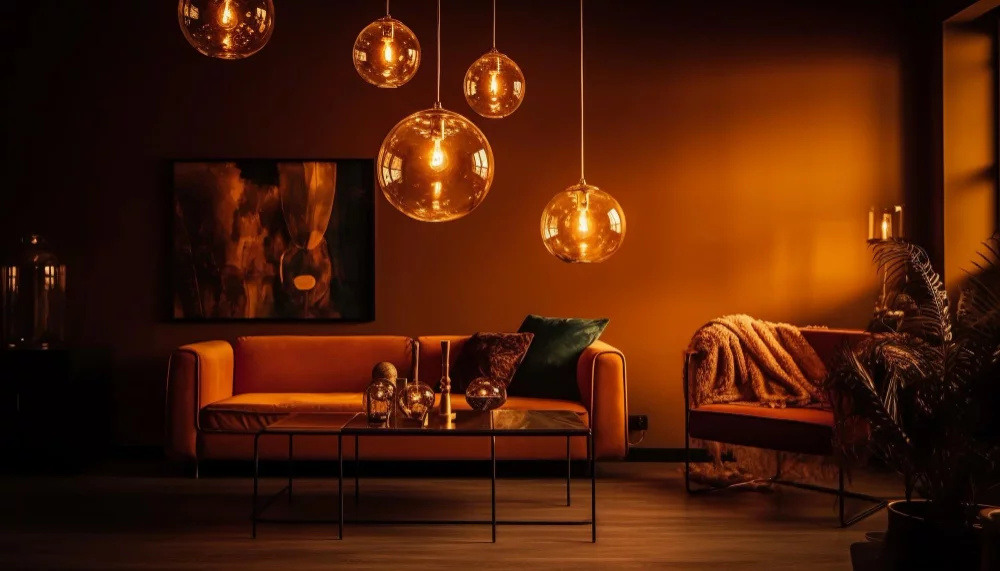
Lighting plays a crucial role in creating a warm and inviting ambiance in any living room. By choosing the right lighting fixtures, layering different lighting sources, and utilizing natural light, you can transform the look and feel of a space. In this article, we will explore these strategies in detail to help you achieve the perfect ambiance in your living rooms.
Choosing The Right Lighting Fixtures
When it comes to lighting, selecting the right fixtures is key. Different types of lighting fixtures can create various moods and atmospheres. Here are a few options to consider:
- Pendant Lights: These hanging fixtures add a touch of elegance and provide focused lighting. They can be used to highlight specific areas or provide ample lighting for activities.
- Chandeliers: Chandeliers offer a grand and luxurious feel to a living room. They are perfect for larger spaces and can become a statement piece in the room.
- Wall Sconces: These fixtures are mounted on the walls and offer a soft and soothing glow. Wall sconces are ideal for creating a cozy atmosphere and can be placed strategically to enhance the overall lighting scheme.
- Floor Lamps: Floor lamps are versatile and can be moved around the room as needed. They provide both ambient and task lighting, making them a functional addition to any living room.
Layering Lighting Sources
Layering lighting sources is essential to create a multi-dimensional and inviting space. The three main layers to consider are:
- Ambient Lighting: This is the primary source of light in the room, generally provided by overhead fixtures like chandeliers or pendant lights. Ambient lighting ensures the room is well-lit and sets the overall tone.
- Task Lighting: Task lighting is focused illumination that helps with specific activities, such as reading or working. It can be provided by table lamps or floor lamps placed strategically near seating areas or workstations.
- Accent Lighting: Accent lighting is used to highlight specific features or objects in the room, such as artwork, architectural details, or plants. Wall sconces or adjustable spotlights can create interesting focal points.
Utilizing Natural Light
Natural light is a valuable asset when it comes to creating a warm and inviting living space. Here are a few tips for maximizing natural light:
- Window Treatments: Choose light-colored curtains or blinds that allow natural light to filter through while still offering privacy.
- Mirrors: Position mirrors strategically across from windows to reflect sunlight and make the room appear brighter.
- Furniture Placement: Arrange furniture to maximize natural light. Avoid placing bulky pieces in front of windows that may block the light.
- Light-colored Walls: Opt for light-colored paint on walls to help bounce and disperse natural light throughout the room.
By carefully considering the types of lighting fixtures, layering different lighting sources, and harnessing the power of natural light, you can create a captivating and inviting atmosphere in your living rooms. Experiment with different lighting techniques to find the perfect balance and transform your spaces into cozy retreats.
Incorporating Personal Touches
If you’re looking to decorate your living room, incorporating personal touches is key to creating a space that truly reflects your unique style and personality. Adding meaningful artwork, arranging family photos and memorabilia, and incorporating plants and greenery are excellent ways to infuse your living room with a sense of personalization. Implementing these elements will make your living room feel warm, inviting, and uniquely your own.
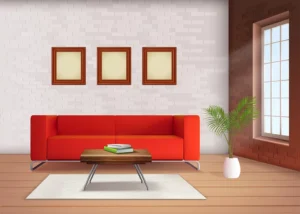
Displaying Meaningful Artwork
Showcasing meaningful artwork in your living room can instantly add character and style to the space. Choose pieces that resonate with you on a personal level, whether it’s a painting, a sculpture, or a photograph. Consider the colors, themes, and emotions that you want to evoke, ensuring that each artwork aligns with your overall vision for the room. Hang them strategically on the walls or display them on shelves or mantels to create focal points that draw the eye and express your unique taste.
Arranging Family Photos And Memorabilia
Arranging family photos and memorabilia is a great way to incorporate personal touches into your living room. Create a dedicated gallery wall or arrange framed photos and sentimental items on a console table or sideboard. Mix and match various frame sizes and styles to add visual interest, and consider grouping related items together to tell a story or capture a specific memory. This arrangement not only adds a personal touch but also serves as a beautiful reminder of the cherished moments and people in your life.
Adding Plants And Greenery
Bringing the outdoors in is an effective way to add life and freshness to your living room. Incorporate plants and greenery throughout the space to create a calming and inviting atmosphere. Choose low-maintenance houseplants that thrive indoors, such as succulents or snake plants, and place them on side tables, window sills, or hanging baskets. Additionally, consider incorporating larger plants as statement pieces, such as a fiddle-leaf fig or a tall palm. These natural elements not only beautify your living room but also improve air quality, making the space healthier and more vibrant.
Frequently Asked Questions On How To Decorate Two Living Rooms
How Can I Decorate Two Living Rooms In A Small Space Efficiently?
To efficiently decorate two living rooms in a small space, utilize versatile furniture, such as storage ottomans, and choose space-saving designs. Use colors and patterns to differentiate the two areas and create a cohesive look. Maximize storage with built-in shelves or floor-to-ceiling cabinets.
What Are Some Tips For Creating Distinct Styles In Two Living Rooms?
To create distinct styles in two living rooms, start by choosing different color schemes and furniture styles. Incorporate unique decor pieces and accessories that reflect each room’s theme. Use rugs, curtains, and lighting to enhance the individual atmosphere of each space.
How Can I Make Two Living Rooms Feel Connected Yet Separate?
To make two living rooms feel connected yet separate, utilize a unifying element such as a shared accent color or pattern. Keep the overall layout consistent for visual continuity. Use different furniture arrangements and focal points in each room to create separation while maintaining a cohesive flow.
Conclusion
Decorating two living rooms can be a fun and creative process. By following these tips, you can create a cohesive and visually appealing space that reflects your personal style. Remember to consider the layout, color scheme, furniture, and accessories for both rooms.
Whether you choose to create a cohesive or distinct aesthetic, the key is to ensure that each living room feels welcoming and comfortable. Happy decorating!


